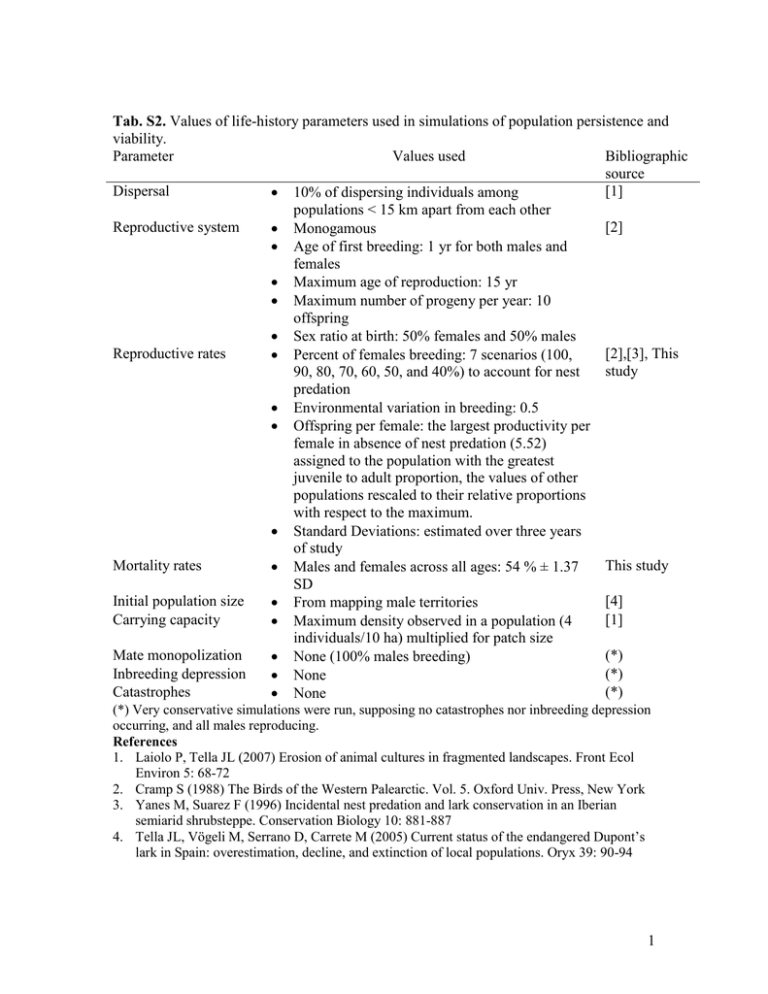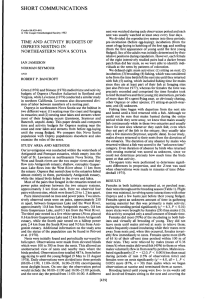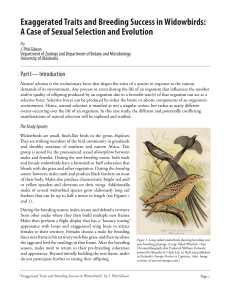pone.0001822.s003.doc
advertisement

Tab. S2. Values of life-history parameters used in simulations of population persistence and viability. Parameter Values used Bibliographic source Dispersal [1] 10% of dispersing individuals among populations < 15 km apart from each other Reproductive system [2] Monogamous Age of first breeding: 1 yr for both males and females Maximum age of reproduction: 15 yr Maximum number of progeny per year: 10 offspring Sex ratio at birth: 50% females and 50% males Reproductive rates [2],[3], This Percent of females breeding: 7 scenarios (100, study 90, 80, 70, 60, 50, and 40%) to account for nest predation Environmental variation in breeding: 0.5 Offspring per female: the largest productivity per female in absence of nest predation (5.52) assigned to the population with the greatest juvenile to adult proportion, the values of other populations rescaled to their relative proportions with respect to the maximum. Standard Deviations: estimated over three years of study Mortality rates This study Males and females across all ages: 54 % ± 1.37 SD Initial population size [4] From mapping male territories Carrying capacity [1] Maximum density observed in a population (4 individuals/10 ha) multiplied for patch size Mate monopolization (*) None (100% males breeding) Inbreeding depression (*) None Catastrophes (*) None (*) Very conservative simulations were run, supposing no catastrophes nor inbreeding depression occurring, and all males reproducing. References 1. Laiolo P, Tella JL (2007) Erosion of animal cultures in fragmented landscapes. Front Ecol Environ 5: 68-72 2. Cramp S (1988) The Birds of the Western Palearctic. Vol. 5. Oxford Univ. Press, New York 3. Yanes M, Suarez F (1996) Incidental nest predation and lark conservation in an Iberian semiarid shrubsteppe. Conservation Biology 10: 881-887 4. Tella JL, Vögeli M, Serrano D, Carrete M (2005) Current status of the endangered Dupont’s lark in Spain: overestimation, decline, and extinction of local populations. Oryx 39: 90-94 1






